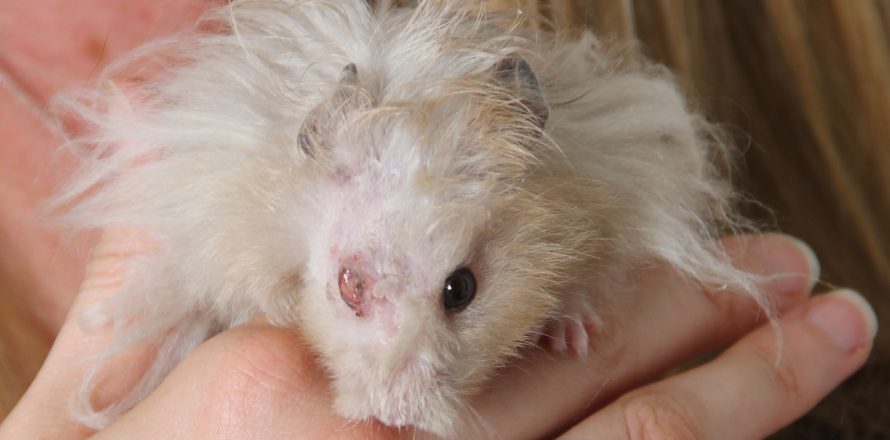
THIS STORY IS FROM OUR ARCHIVES
Theo belonged to one of Cat’s friends who emigrated to Australia three months ago: it was impossible to take the little hamster with her, so he had to be rehomed.
Cat provided the perfect new home: she has plenty of experience in animal care. She has a degree in animal science and welfare, and she worked in a vet clinic as a veterinary nurse assistant for two years. She now works for a human health care company, but she still has a strong interest in animals, and she was happy to take Theo on.
At three years of age, he was already an elderly hamster, spending most of his time sleeping. He only comes out of his nest for a few hours in the evenings. Hamsters are solitary animals: unlike nearly all other pets, they thrive on solitude. If they are forced to share living space with other hamsters, they fight. Theo is a tame, easy-going hamster, and sometimes Cat lets him out of his cage in the evening. He wanders around the living room, sometimes climbing up her legs while she sits on the sofa: she feeds him small treats like pieces of fruit which he seems to enjoy.
THEO’S RIGHT EYE WAS MUCH BIGGER THAN NORMAL
Last Sunday evening, Cat noticed that there was something seriously wrong with Theo’s right eye: it was much bigger than normal, and instead of the normal, bright, beady appearance, it looked dull, with a dry surface. She searched on the internet for “hamster eye problems” and she soon discovered about a condition called “prolapse of the eyeball” that’s common in hamsters. To put it bluntly, the eyeball pops out of the socket, and once it’s out, it can’t go back in. The news from Cat’s internet search was not good: most hamsters seemed to die a few days after developing this problem, and if they were taken to the vet, euthanasia was usually recommended.
There are several possible causes of prolapsed eyeballs in hamsters: sometimes it happens when people grasp their pets too firmly by the scruff of the neck. If hamsters get their heads caught between two objects (like the bars of a cage), it can also happen. And in many cases, like Theo, the cause remains unknown: owners just find their pets with damaged eyeballs.
Cat was not optimistic when she brought Theo to see me: she expected that I’d recommend euthanasia. As I examined the small creature, Cat told me how he was surprisingly unaffected by his damaged eye: he was still eating well, and he was scurrying around his cage as he always had done. It seemed a shame to give him an injection to end his life, but he was bound to be suffering pain from the prolapsed eye, so something had to be done.
SURGERY WAS NEEDED
I came up with an alternative suggestion: I could carry out a simple procedure to remove his eye, under a short general anaesthetic. I would charge the lowest possible fee that I could, to make it affordable (the high cost of veterinary surgery is one of the reasons why hamsters with this problem are often euthanased). Theo was already a geriatric hamster: there was a chance that he might not survive the operation, and there was a risk that he might die of old age soon anyway. But if I could remove the immediate source of discomfort, perhaps he could go back to enjoying life in his cage as before.
The operation did not take long, and a few hours later, Cat took him home. He made a rapid recovery, returning to his usual routine of sleeping, eating and a little bit of playing. Theo doesn’t demand much from life: now that his damaged eye is no longer troubling him, he seems to be as contented as he has ever been.
TIPS
- Hamsters often suffer from prolapsed eyeballs
- Veterinary attention is urgent for affected hamsters
- The best approach always depends on the individual situation: talk to your vet




Please note that I am unable to answer veterinary questions in comments. If you have questions or concerns about your pet's health it is always better to contact your vet.